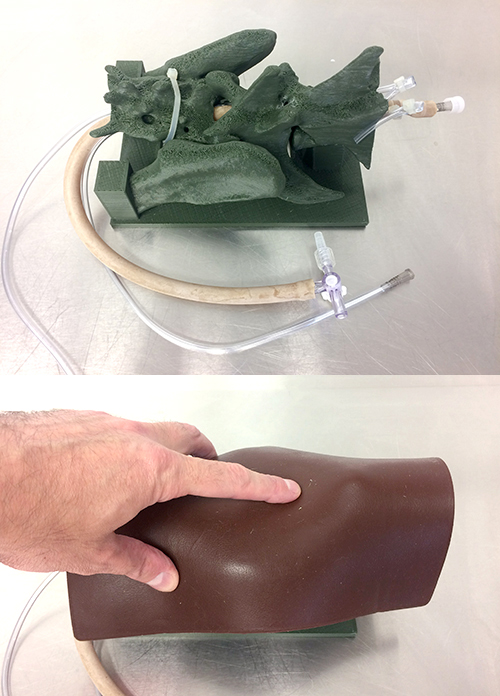Penn Vet has long been recognized for its pursuit of excellence in education and training. While Exotics medicine is highly specialized, Ryan Hospital’s Exotics service is busy and robust, providing important exposure to students during their clinical rotations. Fourth-year students with a strong interest in Exotics medicine can take additional Exotics rotations as electives.
It was during her clinical rotation when Caroline Neville met Pete.
“Pete’s case was a great learning experience for me. I gained experience with an avian traumatic case, including the initial stabilization, diagnostic work-up, surgical planning, and post-operative care,” said Neville. “I also got to help with the anesthesia. Avian anesthesia is not something we get an opportunity to do very often as students, so I felt very lucky to participate and learn from this unique experience. Pete was a really good whole-picture kind of case.”
Before veterinary school, Neville gained experience working at Avian Haven, a wild bird rehabilitation center in Freedom, ME. She worked three years during school as a veterinary technician in Penn Vet’s Exotics Service, specifically to expand her knowledge of avian medicine. After graduation, Neville is planning to participate in an avian residency after she completes a one-year small animal internship.
 Though Kaiman is on track to be a small animal veterinarian, he has always had a strong interest in Exotics. He worked one summer as a veterinary technician in Penn Vet’s Exotics Service and he owns a Senegal parrot named Wellington, who is a regular volunteer for the school’s handling labs, offered during special species symposiums and avian courses.
Though Kaiman is on track to be a small animal veterinarian, he has always had a strong interest in Exotics. He worked one summer as a veterinary technician in Penn Vet’s Exotics Service and he owns a Senegal parrot named Wellington, who is a regular volunteer for the school’s handling labs, offered during special species symposiums and avian courses.
In addition to designing prosthetics for Pete, Kaiman has—at the urging of Wood—created a 3D section of a dog’s spine for the Anesthesia service, which is being used to teach students how to properly administer epidural injections.
“I’m so grateful to have such support and interest from the faculty,” said Kaiman. “I’ve been involved in some amazing projects.”
Kaiman will be able to take both his Exotics and 3D-printing experience into practice. He is currently training two students to use the modeling software. Wood hopes to introduce this kind of work to even more students in the future.
“One of my goals is to acclimate our first- and second-year students to the 3D-printing software and have them make models,” said Wood. “I’d like to make this something unique to Penn Vet. I think if we introduce it to the students early on in their veterinary education, they’ll learn about anatomy and radiology, and then applied anatomy and applied imaging. And then who knows what we can do?”